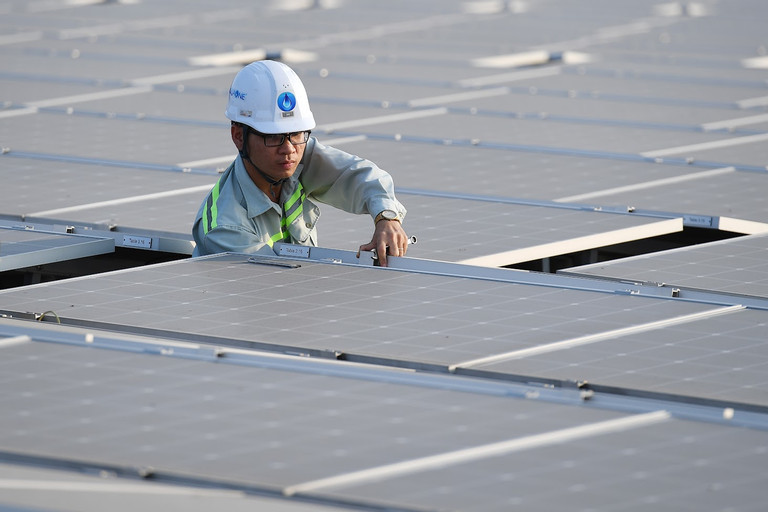
In HCM City, where solar radiation intensity is 4.5kwh per square meter per day, a household that consumes 36kwh of electricity a day wanted to install a rooftop solar power system. Experts estimated that the household needed to install a rooftop power system with capacity of 8kwp.
The electricity output the system can generate is W = 8kWp x 4.5 kWh/m2/day = 36kWh, just enough for the household’s daily consumption.
However, the problem is that electricity generated by the system cannot be used by the household’s members. They need to use electricity in the morning, but the system cannot generate electricity at that time. At noon, when the electricity generation capacity reaches the highest level, no one is there to use the electricity. In the evening, when household members return home after work and study, electricity doesn’t work as there is no sunlight.
Le Hai Hung, PhD, from the Hanoi University of Science and Technology, told this story at a recent workshop on renewable energy development to show the problems in solar power.
Why doesn't the household sell the excess electricity if it doesn’t use up the electricity its system can generate? The answer is that, under the latest proposal by the Ministry of Industry and Trade (MOIT), the household can send excess electricity to the national grid, but it will not get paid.
The proposal has raised strong opposition from investors, experts and citizens. If the proposal is approved, people will have to ‘throw away’ excessive electricity output, and this is a big waste of resources.
Installing rooftop solar power systems is the choice of many individuals and businesses. Manufacturing factories want to install rooftop solar power systems to become partially self-sufficient in electricity, and satisfy criteria on using clean energy to be recognized as ‘green production’. However, the regulation will cause the plans to fail.
Ngo Duc Lam, former deputy head of the Energy Institute under MOIT, said he understands why the proposal was made. "In my opinion, the policies on solar power development management have problems because they have to observe the Law on Electricity and the eighth national power development plan (Plan 8),” he said.
Under Plan 8, the total solar power capacity of Vietnam would be 12,836MW by 2030, including 10,236MW of concentrated solar power sources and 2,600MW from self-produced and self-consumed sources.
MOIT’s updates show that from January 1, 2021 to the end of July 2023, as many as 1,030 rooftop solar power systems with total capacity of 399.96 MWp were installed for personal use, and though they connected to the national grid, they did not sell electricity to EVN units.
As such, after the proposal takes effect, the remaining capacity of the rooftop solar power systems connected to the national grid will be less than 2,300MWp.
If households can develop their own rooftop solar power systems, the total rooftop solar power capacity would exceed the planned capacity, which will pose risks for MOIT.
MOIT acknowledged the concern about the risks. “If the development scale cannot be controlled, the haphazard development will lead to an oversupply, which may damage the national power development plan. This will violate laws on planning,” a MOIT document said.
Lam thinks the laws should be amended if needed. “It is unreasonable to allow households to sell excessive electricity."
This means that if MOIT fears that the total rooftop power capacity in reality may exceed the planned capacity, it would be necessary to raise the ceiling capacity, and if it fears that the transmission lines will become overloaded, it would be necessary to build more transmission lines.
Some experts say it is time to think of electricity storage measures, or ways to store power during off-peak hours and provide power during peak hours.
Luong Bang